June 2025
The global private label cosmetics market size reached USD 10.71 billion in 2024 and is projected to hit around USD 17.87 billion by 2034, expanding at a CAGR of 5.25% during the forecast period from 2025 to 2034. The demand for private-label cosmetics is increasing due to their affordability, which targets a wider consumer base.
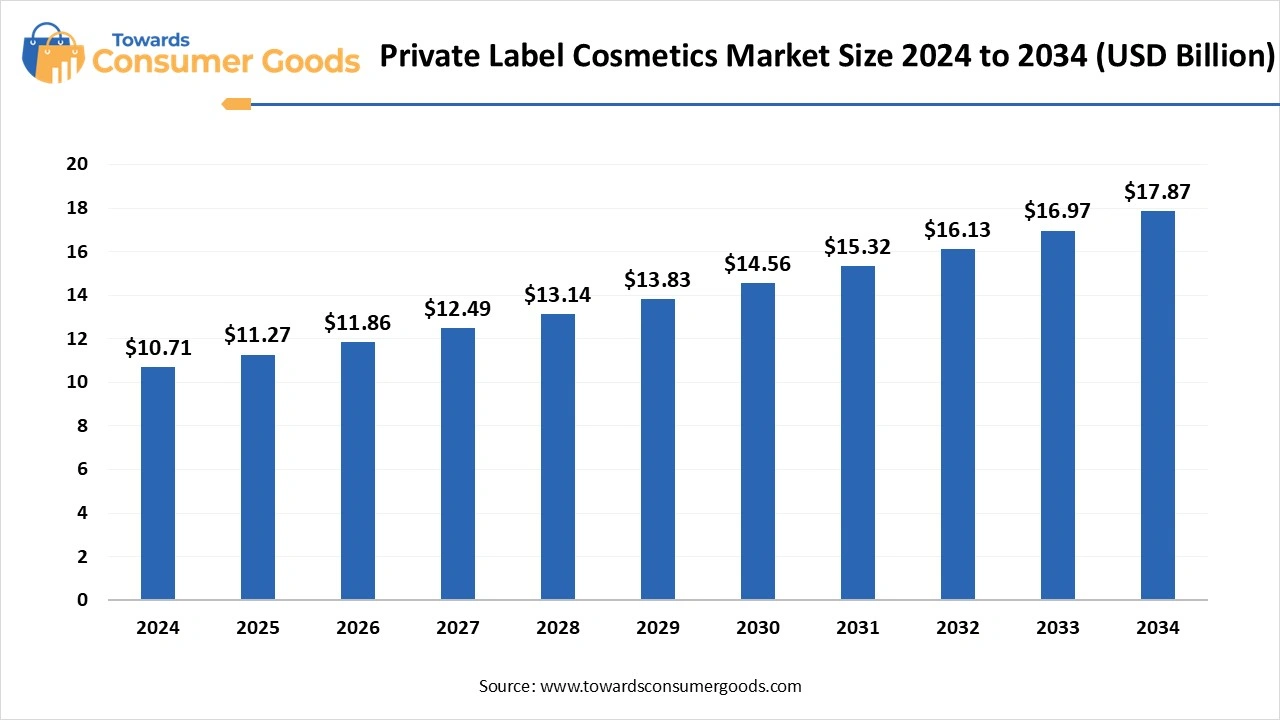
Private label cosmetics are beauty and personal care products that are manufactured by one company and then further sold under another company’s name. The business model deals with the partnership of brand owners and retailers with third-party manufacturers, which helps them in specializing their cosmetic products like lipsticks, foundations, creams, shampoos and many more. Further, the brand owner sells these products under his own online and offline channels, collecting the entire revenue.
The rising popularity of clean beauty products is one of the major market drivers that has managed to attract a significant consumer base. The increasing awareness regarding the use of chemical-based cosmetics is contributing towards the growth in the production of clean beauty products from private label companies. The private label cosmetics market is expanding rapidly as companies are more focused on improving their brand image through transparent offerings. The rising prevalence of skin infections and other conditions is heavily increasing the growth of clean-label cosmetics.
| Report Attributes | Details |
| Market Size in 2025 | USD 11.27 Billion |
| Expected Market by 2034 | USD 17.87 Billion |
| Growth Rate from 2025 to 2034 | CAGR 5.25% |
| Base Year of Estimation | 2024 |
| Forecast Period | 2025 - 2034 |
| Segment Covered | By Product, By Type, By End User, By Distribution Channel, By Region |
| Key Companies Profiled | SKINLYS MENTIONS LÉGALES, NF Skin., HSA Cosmetics, CarasaLab, VITELLE LAB, Lady Burd, COSMEWAX S.A., kdc/one, INTERCOS S.P.A, TOA Inc., |
The rising social media usage and internet penetration have significantly increased in the past few years. For instance, in 2024, there were around 5 billion social media users globally, which accounts for about 63.9% of the world’s population. The private label cosmetics market is expected to gain more popularity as companies are making digital investments to improve their product popularity.
The traditional advertising has been proven less effective in recent years due to higher internet consumption. Global companies are investing in influencer marketing to improve the trust and reliability of these products. The rising advancements have been making online advertising cost-effective as it helps in targeting a particular consumer base.
Limited Finances
The large-sized businesses have been constantly marking a significant growth in the private label cosmetic market due to higher spending capabilities. The business models require higher initial investments due to the need for R&D, which may be restraining for the new startups. The limited finances for small companies are a major factor that affects sourcing premium-quality raw materials. Additionally, the beauty industry has been increasing rapidly, which also increases the market competitiveness and increases the need for higher branding strategies for the newbies.
The Asia Pacific private label cosmetics market size was valued at USD 5.29 billion in 2024 and is expected to be worth around USD 8.83 billion by 2034, exhibiting a compound annual growth rate (CAGR) of 5.26% over the forecast period 2025 to 2034. Asia Pacific dominated the global private label cosmetics market by contributing the highest revenue share in 2024.
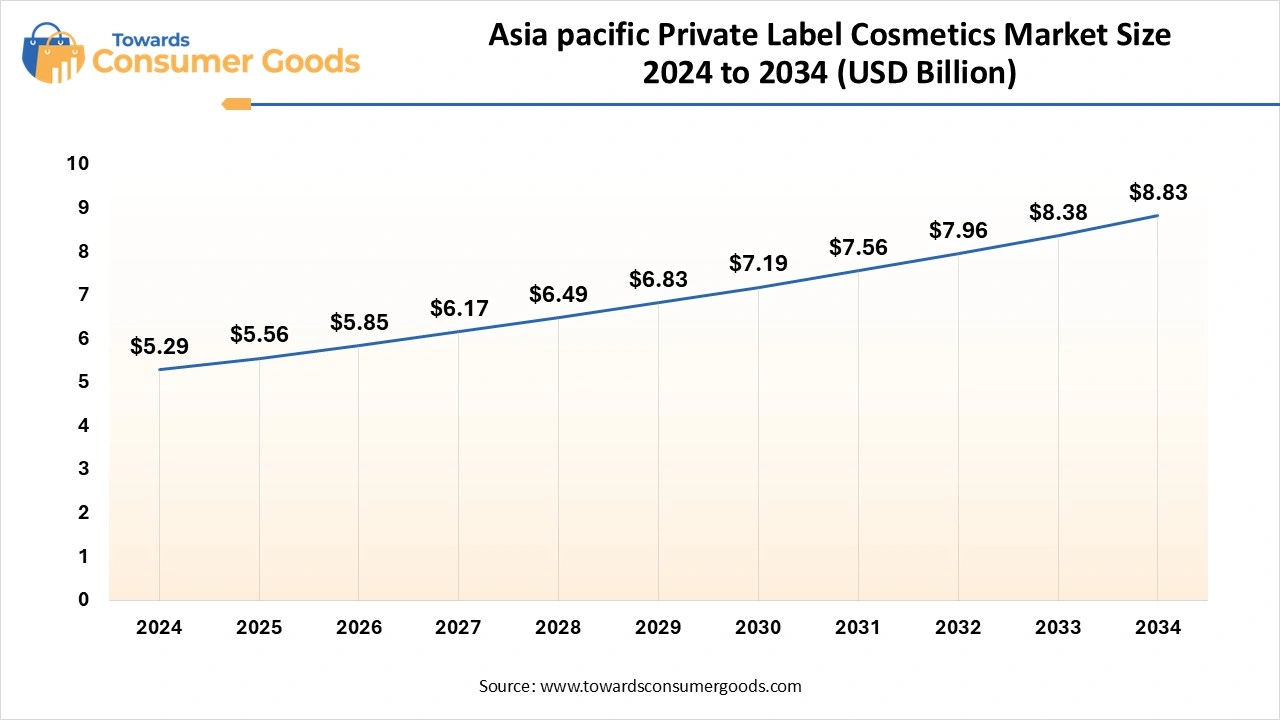
The dominance of the region is attributed to the larger population base in countries like India, China, South Korea, and Indonesia, which use cosmetics on a large scale. These nations fall under developing countries, which have a growing middle-class population. These factors are leading towards the increasing investments in affordable skincare and beauty products. The business model has been proven effective in recent years due to the growing number of retailers that provide various products at affordable prices.
China Private Label Cosmetics Market Trends, China stands as a dominant country in the beauty and skincare industry due to the higher number of consumers who use these products. The country is also well-known for its manufacturing infrastructure, which significantly boosts its economy due to several foreign investments. The Chinese government is supporting domestic manufacturers due to the lower raw materials and production costs, which helps in innovating various cosmetic products. Additionally, the online retail chains have also been marking a massive growth, which is giving a significant boost to the local and global companies in the market.
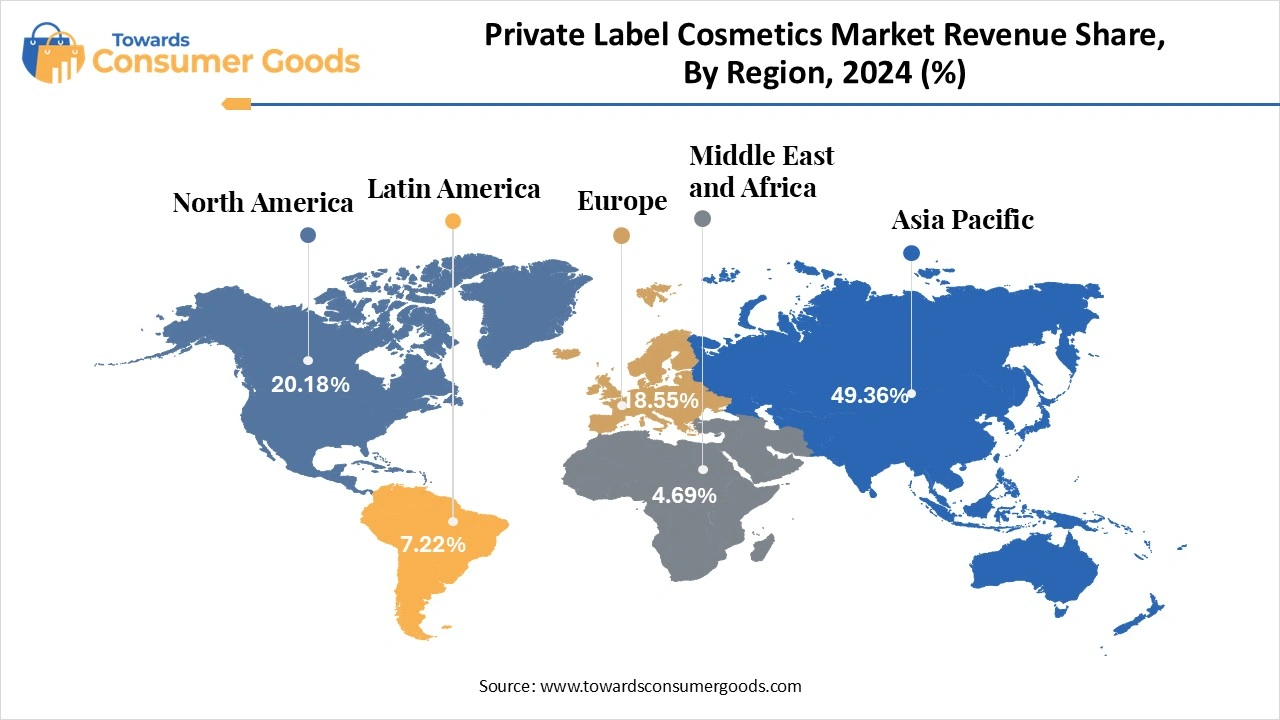
North America is expected to rise at the fastest CAGR from 2025 to 2034. The growth of the region is attributed to the increasing demand for clean and premium beauty products in countries like the United States and Canada. The higher product demand is leading towards an increasing number of global investments for product innovations. The beauty industry in the region has managed to gain global recognition due to its dominance on all media platforms.
United States Private Label Cosmetic Trends , The American population is one of the dominant players in social media consumption, which attracts higher investments in influencer marketing. The rising disposable income in the country is also leading towards the growing space for premium and luxurious products. The consumer base in the country is also expanding rapidly due to the increasing presence of retailers like Walmart, Amazon and others, which are providing a business ground for the emerging companies in the skincare and beauty industry.
The skincare segment generated the highest revenue share in 2024. The dominance of the segment is attributed to the frequent use of products like cleansers, sunscreen, moisturizer and many more, which makes them more demanding in the private label cosmetics market. The increasing consumer awareness regarding skin health and anti-ageing is also helping in attracting a significant consumer base. Additionally, the changing climate and increasing pollution are making these products essential in their daily routines. Many companies are investing in collaborations to introduce new product lines which are affordable and dermatologist-recommended as a strategy to make more revenue.
The haircare segment is anticipated to expand at the fastest CAGR from 2025 to 2034. The rising prevalence of hair damage, hair loss and hair fall is heavily affecting the male and female population, which further attracts a massive consumer base towards these products. The private label cosmetics market is expected to grow more rapidly due to the increasing stress among the urban population. The individuals are preferring various shampoos, serums, and many more in their daily routines, which will help the market grow more significantly. Many companies are focusing on investing in new shelf space for their haircare products, which would increase their popularity among consumers.
The organic or natural segment stood as the dominant one by accounting for the largest revenue share in 2024. The dominance of the segment is attributed to the consumer shift towards clean beauty products that are chemical-free. The rising consumer awareness regarding skin infections and other side effects is leading towards the demand for the use of eco-friendly materials. The private label cosmetics market is expanding rapidly due to the rising trends on social media platforms that boost a significant consumer base towards the use of natural and clean label products. The regulatory bodies are also eliminating the use of certain chemicals that are harmful to the human skin and body.
The conventional or synthetic segment is expected to grow at the fastest CAGR during the projected period. The growth of the region is attributed to the rising affordability of these products, which targets a wider population from the semi-urban areas. The companies are developing certain products which are not harmful to the human body. Additionally, the use of synthetic cosmetics has been higher in the past decades in the beauty industry, which also has an upper hand in product variety. The rural populations are also adopting various skincare products like moisturizers, lipsticks and others in their daily lives, helping the emerging companies to grow more eventually.
The women's segment accounted for the highest revenue share in 2024. The dominance of the segment is attributed to the primary use of various beauty and skincare products in daily lives. The private label cosmetics market has been attracting significant revenue through diverse product offerings. The retailers have invested heavily in these products due to the higher social acceptance of various cosmetic products for women. The marketing strategies have also revolved around these products, which manage to gain a massive revenue through the women’s segment. Additionally, the gifting culture is also increasing among the urban population, which will help the market grow more effectively in the future.
The men’s segment is expected to grow at the fastest CAGR during the forecast period of 2025 to 2034. The rising influence of social media platforms like Instagram and TikTok is significantly helping in changing consumer grooming habits, leading towards the adoption of skincare products. Moreover, the population aims to spend on affordable products, which further leads towards the demand for the private label cosmetics market. As a result, the companies are expected to have a wider business ground with more investments in men’s product lines.
The offline segment generated the highest revenue share in 2024. The dominance of the segment is attributed to the higher consumer base in physical stores due to the availability of product samples. These stores also have professional employees who help consumers to purchase the best products according to their needs. The global companies are investing in physical stores, especially in the tier II, III and IV cities to engage a larger consumer base.
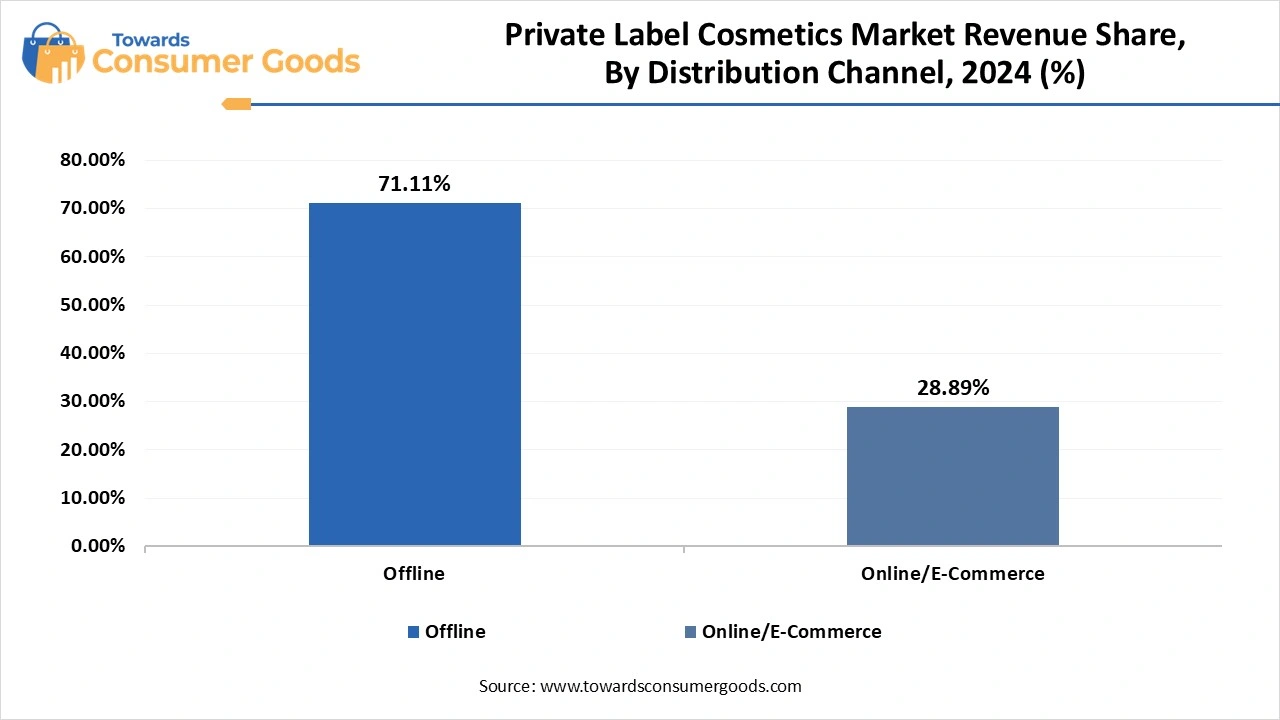
The online segment is anticipated to emerge at the fastest CAGR from 2025 to 2034. The rapid growth of e-commerce platforms like Amazon, Nykaa, Myntra and many others has attracted a massive consumer base in the consumer goods industry. Additionally, the changing lifestyles are also leading towards convenient purchasing options, which leads towards the growth of these channels. These online stores are expanding their hubs and services in many regions, which aim to improve consumer engagement.
Persan
Global SS Beauty Brands
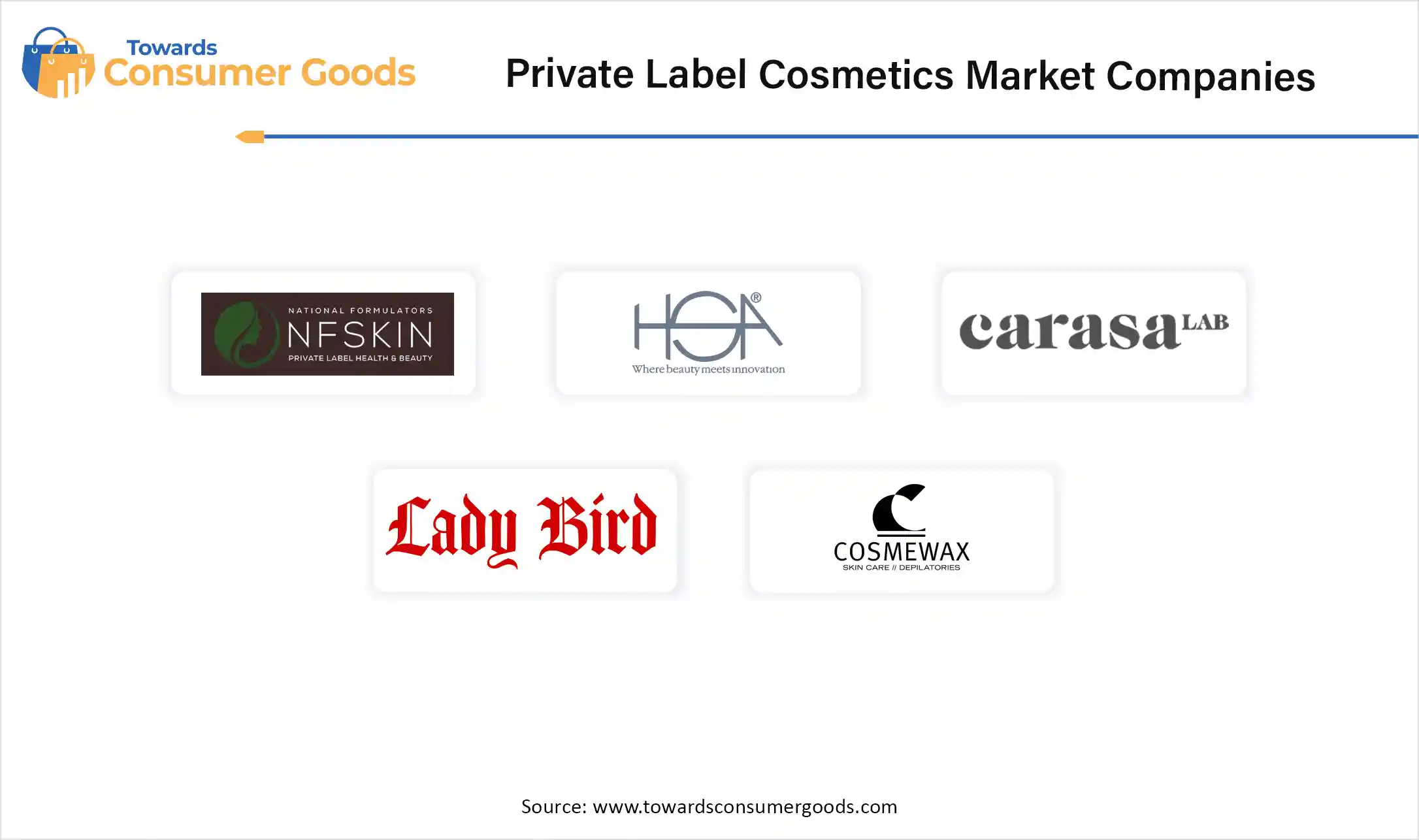
By Product
By Type
By End User
By Distribution Channel
By Region
The global smart TV sticks market size was estimated at USD 35.11 billion in 2024 and is predicted to increase from USD 36.78 billion in 2025 to appro...
June 2025
May 2025